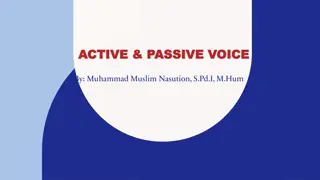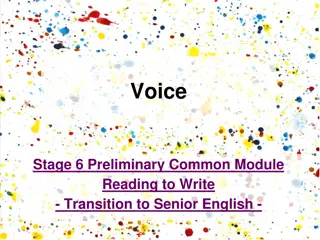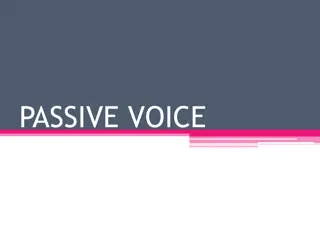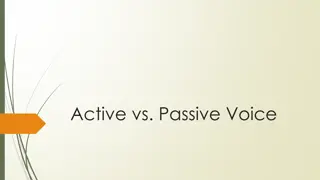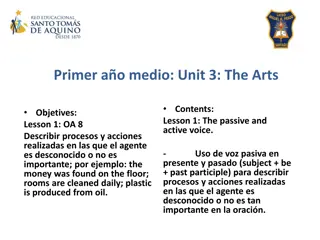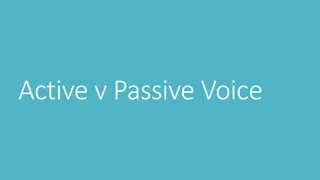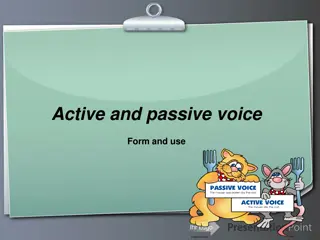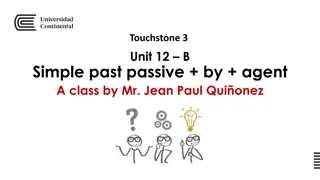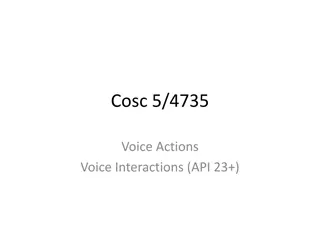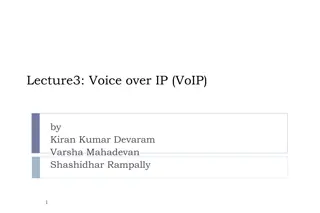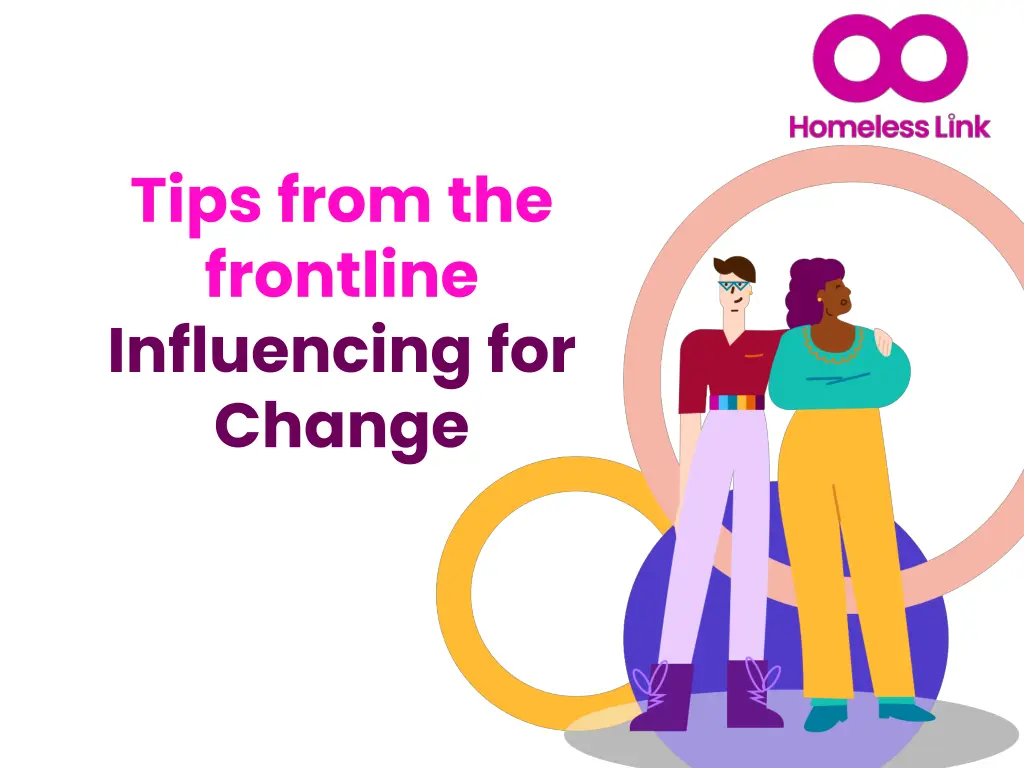
Influencing for Change in Addressing Women's Homelessness
Learn about the importance of addressing women's homelessness, defining the change needed, understanding decision-makers, and influencing at various levels to create impactful change in homeless services. Discover strategies to collaborate with key stakeholders and organizations for a collective voice in advocating for women with unmet needs.
Download Presentation

Please find below an Image/Link to download the presentation.
The content on the website is provided AS IS for your information and personal use only. It may not be sold, licensed, or shared on other websites without obtaining consent from the author. If you encounter any issues during the download, it is possible that the publisher has removed the file from their server.
You are allowed to download the files provided on this website for personal or commercial use, subject to the condition that they are used lawfully. All files are the property of their respective owners.
The content on the website is provided AS IS for your information and personal use only. It may not be sold, licensed, or shared on other websites without obtaining consent from the author.
E N D
Presentation Transcript
Tips from the frontline Influencing for Change
Why is it relevant? Women s experiences of homelessness are often less visible (temporary accommodation, sofa surfing, unsafe accommodation, public transport etc.) Only 11% of homelessness services are gender specific. Services and systems which are designed for everyone without recognising the difference that gender makes, can privilege access for men. It is often necessary to raise a collective voice to advocate for the needs of women that might otherwise remain unseen.
Defining the change you want to see Establish a shared objective Decide the changes needed to make it happen Understand who holds the responsibility for making these changes decision makers
Understand Decision makers Doing research (internet; local news and media; colleagues) Build relationships with the decision maker. Establish what is known: what are the individual s preferences and passions; what constraints do they face. Think about relevant timing e.g. at what time of year are budgets set Building relationships with commissioners Local authorities need to conduct adequate consultation to ensure their services are responsive to local need. To contribute to this work, build a relationship with the local commissioners. Provide evidence of the local need (quantitative and qualitative), as well as offering support with consultation process and future engagement work.
. Spheres of influence The approach you take will vary depending your understanding of the decision maker and whether you are trying to influence organisational, local or national change. Organisational Identify the barriers to your work and consider what is in your power to change. Use resources including practice guidance to help you develop and improve policy and practice. Local Local Exchange information and support with organisations that face the same problems. Raise awareness in existing local forums and networks Build relationships with local decision makers. Identify and highlight positive practice in other local areas.
National Collaborate with other organisations that are highlighting the issues already. Build a relationship with a local or relevant MP. Contribute to government consultations or existing vehicles such as the all-party parliamentary groups (APPG). Practice Highlight Agenda Alliance was created in 2015 to bring together the voluntary sector to advocate for women and girls with the most complex unmet needs. The alliance coordinate policy and practice interventions with the goal of ensuring systems and services respond appropriately to women and girls with unmet needs. In 2023 Agenda Alliance collaborated with the national service Changing Lives to produce the report Dismantling Disadvantage : TSWF Final Report (agendaalliance.org). This report highlights the disproportionate impact cuts to public services have had on women with unmet needs in the North-East of England and makes recommendations for how public services can be reformed to effectively meet women s needs.
Make an argument for change 1. Connect people to the problem. The story you re telling about why others should care is best when it communicates emotions as well as facts. 2. Provide evidence. This evidence can be demonstrated by in-person visits and stories as well as data. 3. Decide on your asks for change. They can be ambitious but think about how you can also present them as achievable. 4. Prepare your counter-argument. Difficult questions may be asked, and the more prepared you are, the more confident you will feel answering them.
What about men? Frontline practitioners identified this as a common question asked when they raised the need for improved response to women s homelessness. Key to providing a response to this question and questions like it, is a well-practiced answer. When preparing your own answer, write down the key points you want to make and the evidence you want to use to support it. This might include national statistics on health and other outcomes of women experiencing homelessness, evidence of repeat homeless applications made by women in your local area, data on women accessing your service who are homeless. This may demonstrate that women experience homelessness, the current solutions are not working and there may be a more efficient use of resources.
Make an argument for change 5. Capitalise on knowledge and skills in your organisation. The team can also play a role in educating other local services and professionals on what effective responses may look like. 6. Understand the costs involved. Be clear on the cost, and the potential savings i.e. (spending x on this service will save y on another) 7. Reflect on your progress. Assess whether it s meeting the objectives and celebrate what you have achieved.
Build Alliances 1. Attend partnership meetings. This includes meetings which provide a forum to connect with other professionals locally and nationally. 2. Make time for your influencing. Try to ringfence this time and fund the work if possible. 3. Build unlikely alliances. Identify services and decision makers you might not usually expect to build alliances with. 4. Find ways to improve communication. Find common ground and consider how you can support each other to improve the communication overall.
Practice Highlight The Women s Homelessness Action Group (WHAG) is an initiative that emerged from the organisation It Takes A City in Cambridge. WHAG came together with the goal of raising awareness of women s homelessness locally. The group has a range of members, including those currently working in the homelessness sector, academics, student activists and volunteers, those with lived experience, city council and county council officers, those with past work experience in homeless provision, the CEO of local women s aid, the voluntary sector and those who care passionately about changing services etc for homeless women. Members of WHAG attend as many local meetings as they can to raise the issue of women s homelessness. In 2022, the WHAG commissioned a report to lay out the local context of women s homelessness and look into how they could work towards providing a Haven for women to use at night-time in Cambridge. You can find this report here: The-Haven-Tackling-Womens-Homelessness-in- Cambridge-together-Aug-2022-PDF.pdf (ittakesacity.org.uk). While funding for the work remains a key challenge, it is ongoing.
Further Resources Myth Busting Women s Homelessness (Homeless Link): https://homelesslink- 1b54.kxcdn.com/media/documents/Myth_Busting_cVUs0i9.pdf Ending Women s Homelessness resources (Homeless Link): https://homeless.org.uk/areas-of-expertise/meeting-diverse- needs/ending-womens-homelessness/ Policy and Practice Briefing (Women Against Homelessness and Abuse) https://lawadv.org.uk/wp-content/uploads/WAHAPOLICYBRIF-SEP12- min.pdf Report - Tackling Women s Homelessness in Cambridge (It Takes a City) The-Haven-Tackling-Womens-Homelessness-in-Cambridge-together-Aug- 2022-PDF.pdf (ittakesacity.org.uk) Projects and Campaign (Agenda Alliance) https://www.agendaalliance.org/our-work/projects-and-campaigns/ Resources and training (Against Violence and Abuse) https://avaproject.org.uk/
Next steps Read the full briefing Sign up to training Read other Homeless Link resources
What we do homeless.org.uk Homeless Link is the national membership charity for frontline homelessness services. We work to improve services through research, guidance and learning, and campaign for policy change that will ensure everyone has a place to call home and the support they need to keep it. @HomelessLink


